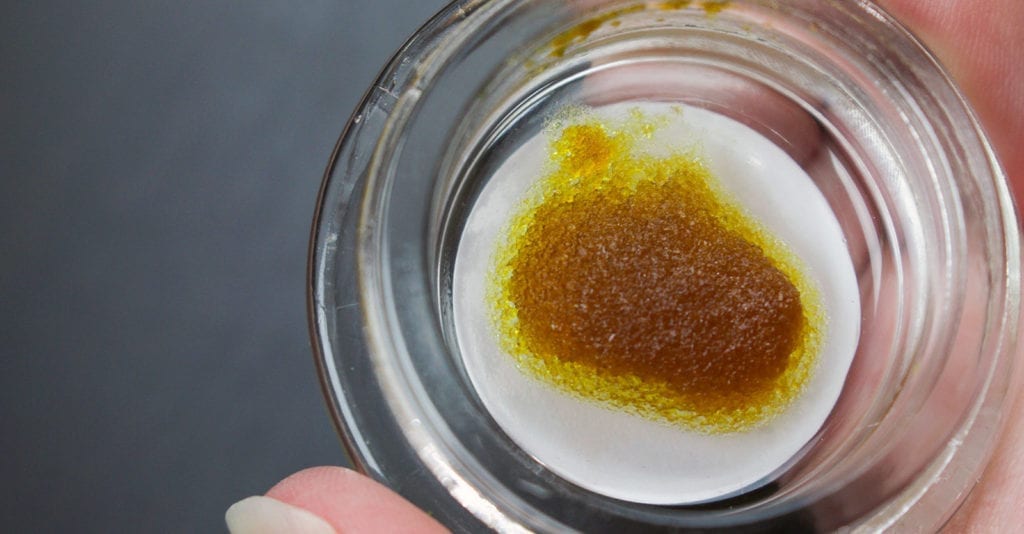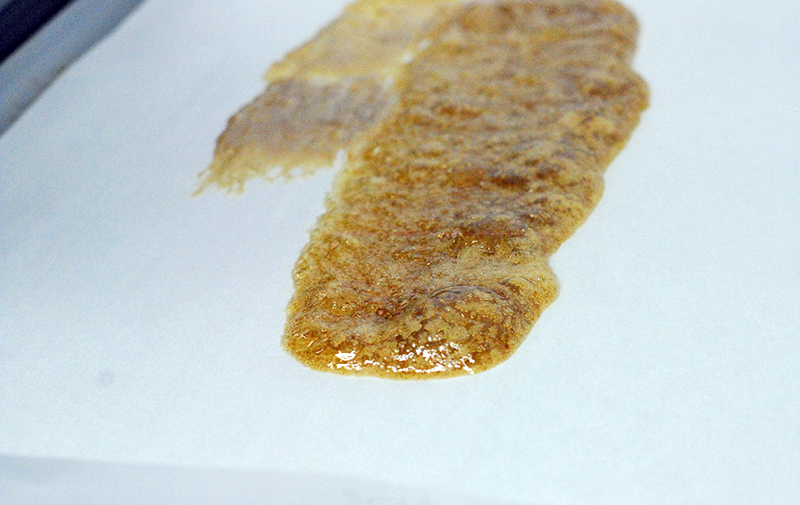Live resin is a type of butane hash oil extracted from fresh cannabis plants that have been frozen immediately after harvest.
Know Your Cannabis: What Is Live Resin?

Full story continued below.
Advertisement
Cannabis plants, while fresh, contain a different collection of terpenes than cannabis that has undergone a more traditional curing process.
How does it work?
By freezing the fresh cannabis plant matter, cultivators and manufacturers are able to keep their product with a higher water content than is typical of concentrates made from traditionally dried and cured cannabis plants.
Butane in particular is water soluble above certain temperatures so, to prevent contamination, live resin is extracted at very low temperatures. Extractions of fresh, frozen plant matter must be made between -20 and -50 degrees Fahrenheit to prevent the butane’s toxins from polluting the extract as the frozen cannabis is washed in solvent.
The final step of the process is to vacuum-dry the extract, thereby removing the remaining butane and other impurities. Manufacturers manage to maintain low temperatures during the boil-off process by keeping the extract in a vacuum chamber.

What’s the point of live resin?
Ultimately, the cold, fresh extraction process produces an extract that contains more terpenes overall, particularly the lightweight and volatile monoterpenes like Myrcene and Terpinolene that are common in cannabis, but significantly harder to keep around throughout the high-temperature drying and curing processes that are otherwise typical to the industry.
When a cannabis plant is flash-frozen immediately after harvest, however, cultivators and manufacturers are able to preserve terpene profiles more fully. Today, cannabis patients and enthusiasts are turning more and more frequently to these terpenes as indicators of specific effects that might be common to a strain or phenotype.
Understanding cannabis terpenes
Terpenes are some of the most pervasive organic compounds in nature. Insects and plants both use them for signaling a variety of things, including to fight off predators and encourage pollination. Trees can even emit terpenes that encourage water vapor to form clouds.
Many organisms use some type of terpenoids as part of the process of synthesizing new cells and other biological compounds. Furthermore, terpenes make up the primary therapeutic content of essential oils like lavender.
In cannabis, terpenes have been shown to dictate important differences between the effects of varying cannabis strains and indeed carry many therapeutic benefits of their own. While most consumers have realized there are major differences between the different cannabinoids such as THC, CBD, or CBG, fewer people have caught on to the fact that terpenes — or, essentially, the flavors and smells of a specific cannabis strain — can play an even more significant role in dictating a cannabis strain’s effects.
For medical cannabis patients in particular, complex terpene profiles and high terpene counts can make or break a strain in terms of its therapeutic effects.
Accordingly, the cold extraction process used to create live resins frequently results in a product that not only tastes stronger and better, but has a more complex therapeutic effect and makes for a more finely detailed and customizable experience.
Editor’s note: This article has been updated from its original version.
Get daily news insights in your inbox. Subscribe
End
